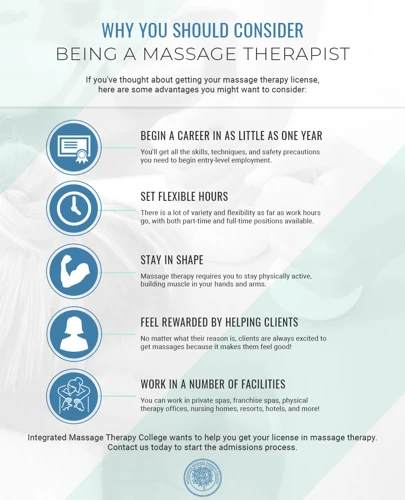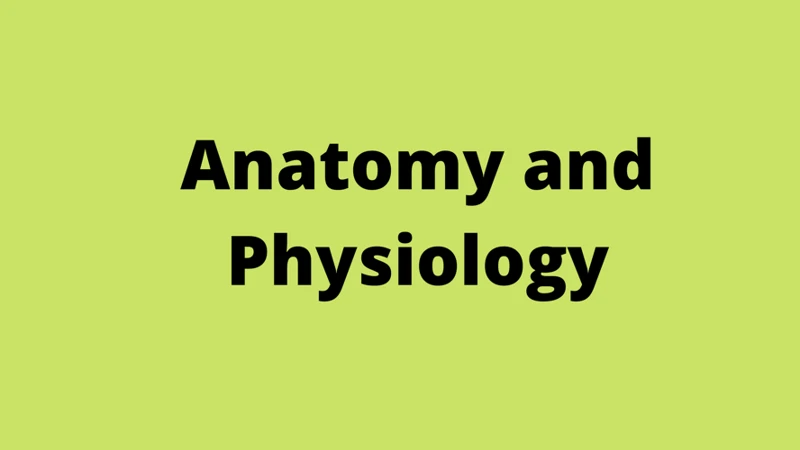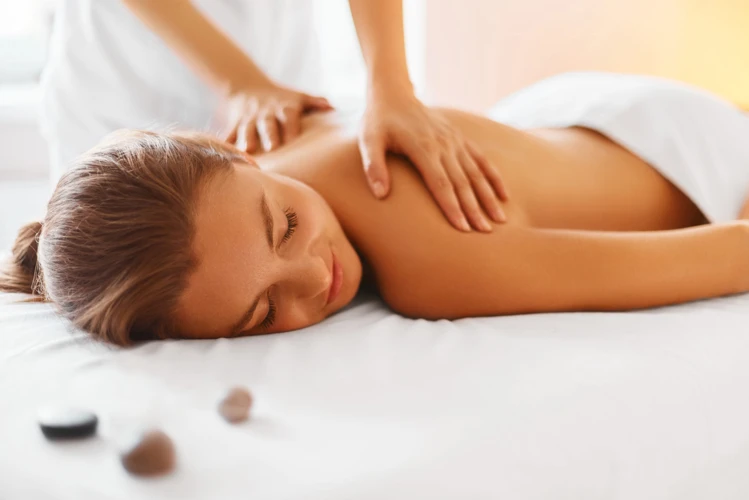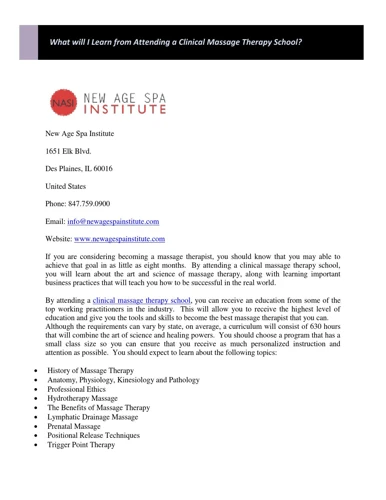Are you interested in exploring the amazing world of massage therapy? Do you want to know what to expect from massage school? If so, you’ve come to the right place. In this article, we will unlock the secrets of professional massage therapy and discuss what you can learn in massage school. From anatomy and physiology to Swedish massage and deep tissue massage, you’ll learn the skills and techniques needed to practice massage therapy professionally. We’ll also discuss the various massage modalities and specializations available, as well as the potential career paths you can take once you complete massage school. So, let’s get started!
Contents
What is Massage Therapy School?

Massage therapy school is a place where students can learn the techniques, theories, and history of massage therapy. It is a hands-on program that teaches students how to manipulate soft tissue in order to relieve pain, stress, and promote relaxation. Massage therapy schools offer courses in anatomy, physiology, and massage techniques. Most massage therapy schools also provide students with the opportunity to practice their techniques on real clients.
What is massage therapy school like?
Massage therapy school is immersive, rigorous, and rewarding. Students learn the foundational knowledge necessary to practice massage therapy. Courses cover topics such as:
- Anatomy and physiology
- Kinesiology
- Pathology
- Massage techniques
- Business practice
- Ethics
In addition to the classroom work, massage therapy schools also provide students with hands-on experience. This includes supervised practice in massage techniques, as well as the opportunity to practice on real clients. This practical experience gives students the necessary skills and confidence to become successful massage therapists.
What Will I Learn in Massage School?

Massage school is an educational program designed to instruct students in the techniques and concepts of massage therapy. It provides an in-depth exploration of the science, anatomy, physiology, and pathology of massage therapy.
- Anatomy and Physiology: Students will learn about the structure and functioning of the human body, including the cardiovascular, lymphatic, muscular, skeletal, and nervous systems.
- Pathology: Students will become familiar with the etiology, signs, and symptoms of various diseases, disorders, and conditions. They will also learn how to identify, assess, and treat these conditions with massage.
- Massage Techniques: Students will learn various massage techniques, such as Swedish and deep tissue massage, to effectively treat clients.
- Kinesiology: Students will gain an understanding of the movement of the human body and how it relates to massage.
- Business and Professionalism: Students will learn how to manage a massage business, including marketing, client relations, and legal considerations.
Massage school is an invaluable experience for anyone looking to pursue a career in massage therapy. Students will gain a comprehensive understanding of the science and techniques of massage, as well as the business and professional skills necessary to succeed.
Anatomy and Physiology

- Anatomy: Students will learn basic and complex anatomy, including the names of bones, muscles, and organs, as well as their functions and locations in the body.
- Physiology: Students will learn the principles of how the body works, including how muscles and other structures interact to enable movement, how the nervous system sends signals, and how the cardiovascular system circulates blood.
Massage school will give students a deeper understanding of the body, enabling them to provide more effective and targeted treatments. Topics such as kinesiology, biomechanics, neurology, and pathology will be covered, as well as the effects of massage on the body.
Massage Theory and Techniques

- Swedish massage: This is perhaps the most popular and well-known massage technique. It is a relaxation massage that includes long, gliding strokes, kneading, and friction. It increases circulation, relaxes muscles, and relieves tension.
- Deep tissue massage: This technique uses a deeper pressure that helps to reduce chronic muscle tension and reach deeper layers of muscle tissue. It can improve range of motion, reduce pain, and help to manage stress.
- Trigger point massage: This technique is used to target specific areas of pain. It is designed to release tight muscle fibers and knots.
- Sports massage: This massage is specifically designed for athletes and helps to improve performance, reduce recovery time, and reduce the risk of injury.
- Prenatal massage: This massage is specifically designed for pregnant women and helps to reduce stress, reduce swelling, and relieve muscle aches and pains.
- Acupressure: This technique uses finger pressure to apply pressure to specific points on the body in order to relieve pain and tension.
- Reflexology: This technique uses pressure to specific points on the feet, hands, and ears in order to relieve tension and improve overall health.
- Shiatsu: This is a Japanese form of massage that uses pressure and stretching to relax the body and improve overall health.
- Chair massage: This massage is typically done in a chair and focuses on the head, neck, shoulders, and back.
Massage therapy also involves an understanding of anatomy, physiology, and kinesiology in order to assess and treat clients effectively. Students will learn how to properly use massage oils, cream, and lotions, as well as how to adjust the pressure and techniques to meet the needs of their clients. Learning about the different massage techniques, their benefits, and how to use them correctly is an essential part of massage school.
Business and Professionalism

- Business Skills: Massage therapy involves more than just administering massage. You’ll learn how to market your business, set up appointments, and manage finances. You’ll also discover the importance of customer service and professionalism.
- Networking: You’ll learn the value of networking with other professionals and joining professional associations. These connections can help you build a successful career.
- Business Ethics: You’ll learn the importance of professional business ethics and why it’s important to abide by these standards.
- Insurance and Laws: You will also learn the types of insurance policies needed to practice massage therapy, and the laws that govern the profession.
Specialty Certifications

Massage schools offer a variety of specialty certifications that allow students to specialize in certain areas. These include sports massage, deep tissue massage, myofascial release, reflexology, and prenatal massage. By completing a specialty certification, students will gain a deeper understanding of the particular massage technique and be able to work with clients with specific needs. Specialty certifications can also be a great way to build a successful massage practice and attract clients.
Benefits of Massage
- Reduces Stress: Massage therapy helps to reduce stress levels by reducing the level of cortisol, the stress hormone, in the body. It also increases serotonin and dopamine, which help to promote relaxation and reduce stress.
- Relieves Pain: Massage therapy is an effective treatment for pain relief, as it relaxes tight muscles, increases blood flow and provides an overall sense of relief.
- Improves Mobility: Massage therapy helps to increase flexibility, range of motion and overall mobility. It can help to reduce stiffness and improve joint mobility.
- Improves Circulation: Massage therapy increases circulation by stimulating the lymphatic system, which helps to remove toxins from the body. It also helps to improve the flow of oxygen to the muscles.
- Improves Sleep: Massage therapy helps to reduce stress and improve relaxation, which can lead to improved sleep. It can also help to reduce anxiety and depression, which can lead to a better quality of sleep.
- Reduces Symptoms of Depression: Massage therapy has been shown to reduce symptoms of depression, such as fatigue, irritability and feelings of worthlessness.
- Improves Cardiovascular Health: Massage therapy helps to reduce blood pressure, improve circulation and reduce cholesterol, which can help to improve cardiovascular health.
Frequently Asked Questions
What Kind of Massage Techniques Can I Learn in Massage School?
Massage school will teach students a variety of massage techniques, including Swedish massage, deep tissue massage, sports massage, trigger point therapy, myofascial release, and reflexology. Students will learn how to use massage to help alleviate pain, reduce stress, and promote relaxation. They will also learn how to apply massage techniques to various areas of the body and how to adjust their technique to fit the needs of their clients.
How Long Does It Take to Complete Massage School?
Full Time: Most massage school programs can be completed in 3-6 months depending on the curriculum and the number of hours of instruction.
Part-time: If you choose to go to massage school part-time, you can expect to complete the program in 6-12 months.
- Programs may include courses in anatomy, physiology, kinesiology, pathology, massage therapy techniques, and business principles.
- You may also take elective courses such as hydrotherapy, sports massage, and healthcare.
- You’ll also need to complete a certain number of hours of supervised practical experience as part of your program.
- Most massage schools also require you to pass a final exam in order to graduate.
Is Massage School Certification Necessary to Work as a Massage Therapist?
Yes, massage school certification is essential for anyone wishing to work as a massage therapist. Without a certificate from an accredited massage school, it is impossible to practice as a professional massage therapist. Here’s why:
- In some countries, massage therapy is a regulated profession and requires certification from an accredited massage school.
- Without a massage school certification, it is not possible to obtain a license to practice massage therapy professionally.
- Obtaining a massage school certification provides massage therapists with the required qualifications and skills to practice massage therapy legally.
- In some countries, massage therapists must also take continuing education courses to keep their certification up-to-date.
Therefore, in order to work as a massage therapist, one must obtain a certification from an accredited massage school. This certification will provide the necessary qualifications and skills needed to practice massage therapy professionally and legally.
Do I need to have any prior experience or knowledge before enrolling in massage school?
No, prior experience or knowledge is not necessary to enroll in massage school. Most massage schools provide a comprehensive program covering the fundamentals of massage, anatomy and physiology, and business and ethics. Students learn a variety of massage techniques and therapies, and gain a solid understanding of the practice and profession of massage therapy.
Are there any continuing education requirements for massage therapists after completing massage school?
Yes, after completing massage school, massage therapists are required to take continuing education courses to remain certified. These courses can include topics such as:
- Anatomy and physiology
- Kinesiology
- Pathology
- Massage techniques
- Business management
- Ethics
- Laws and regulations
- Client communication
Massage therapists must typically complete a certain number of continuing education credits each year, although this requirement varies by state. Check with your state’s massage therapy board to determine what continuing education is necessary.
Conclusion
Massage school can provide you with the foundation you need to become a successful massage therapist. By learning about the theories and techniques of professional massage, you can gain the skills to help your clients achieve physical and emotional balance. With the right attitude, dedication, and passion for the field, you can build a successful career in massage therapy.

